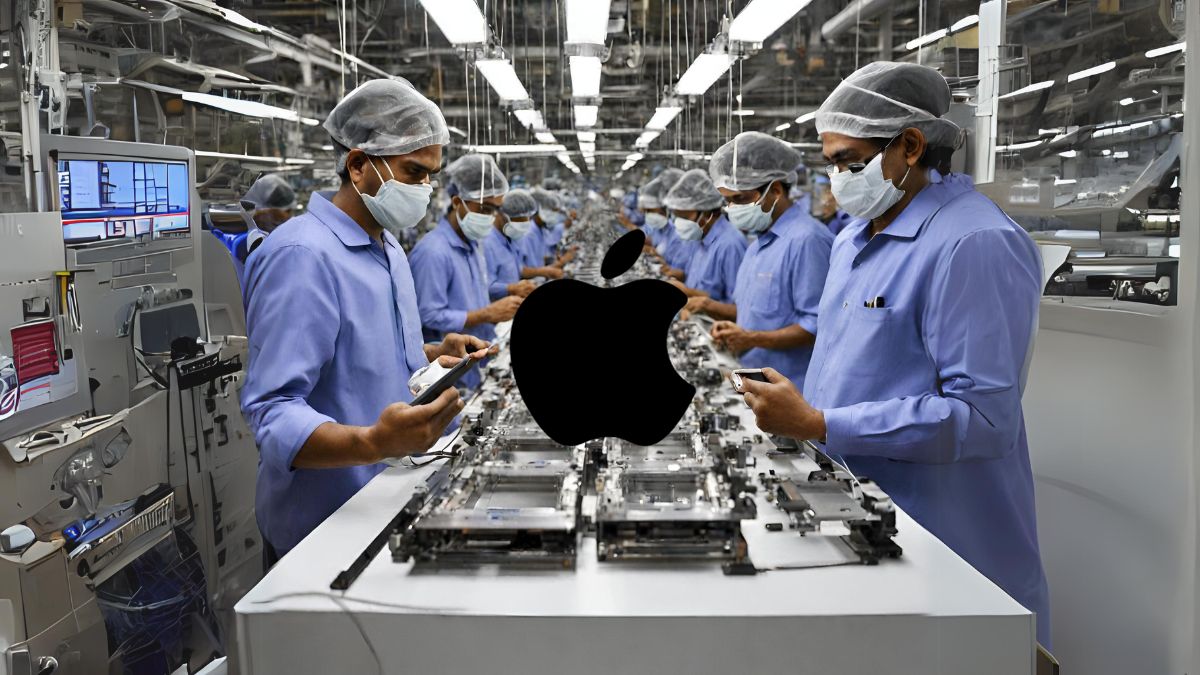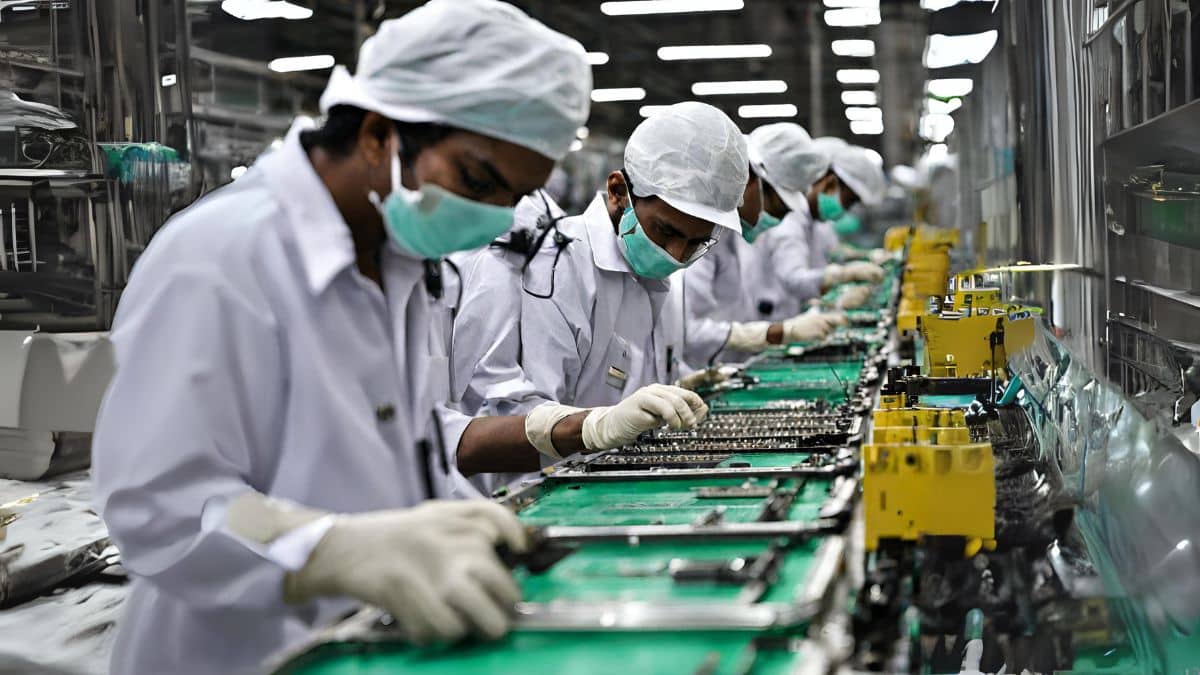HIGHLIGHTS
- By the end of FT 2024, Apple hopes to reach a production milestone of Rs 1 lakh crore for iPhones in India.
- This audacious objective follows the company’s triumphant production upswing, during which more than Rs 60,000 crore worth of iPhones were produced in the first seven months.
- Industry insiders predict a high chance of attainment in the first quarter of FY25, even in the unlikely event that the Rs 1 lakh-crore threshold is not reached by the fiscal year’s end.

The electronics giant Apple is ardently striving to reach a historic production milestone of Rs 1 lakh crore for iPhones in the fiscal year ending March 2024 in an effort to strengthen its manufacturing footprint in India. This audacious objective follows the company’s triumphant production upswing, during which more than Rs 60,000 crore worth of iPhones were produced in the first seven months.
The fact that a sizable portion—roughly 70%—of iPhones made in India end up in overseas markets is noteworthy. Apple surpassed the total export amount for 2023 by selling an astounding 40,000 crore ($5 billion) worth of iPhones between April and October of the current fiscal year.
Embracing the Joyful Wave Despite Worldwide Obstacles
In the face of worldwide economic challenges and a decline in the demand for electronics, Apple’s strategy of increasing production capacity at its manufacturing partners has been crucial. Industry insiders predict a high chance of attainment in the first quarter of FY25, even in the unlikely event that the Rs 1 lakh-crore threshold is not reached by the fiscal year’s end.
Meeting the increased demand for holiday products in the West, particularly in the US, is a key component of Apple’s business strategy. Outside forces have presented obstacles, though, so achieving the Rs 1 lakh crore goal is a complex but doable undertaking.
Development of the Manufacturing Environment
Apple’s historic accomplishment from the previous fiscal year was the first time a single brand had more than $5 billion in exports from India. Industry insiders credit Apple’s wider goal of positioning India as a major hub for production and exports, as well as its shrewd focus on the country as a vital market, for this achievement.
Apple’s export numbers were praised by Navkendar Singh, Associate Vice President of Client Devices and IPDS at IDC India, who highlighted how well they matched the company’s strategic goals in the Indian market. Singh emphasized Apple’s resolve to turn India into a medium- to long-term hub for exports and manufacturing.
The complex network of Apple’s manufacturing operations in India includes the manufacturing behemoths Foxconn and Pegatron in Tamil Nadu, as well as Wistron (which is currently owned by the Tata Group) in Karnataka. These companies, who manufacture smartphones under the government’s production-linked incentive (PLI) program, must file quarterly reports on employment, exports, investments, and production.

Apple’s India Revenue Record
Comparably, CEO Tim Cook stated that Apple surpassed its performance in other international markets in the previous quarter, setting a new revenue record in India. The strong iPhone sales from July to September served as the main engine for this achievement. According to Counterpoint Research, Apple saw the greatest quarterly shipments ever during this time, topping 2.5 million units, with a notable 34% year-over-year rise during this timeframe.
Apple isn’t deterred even if typical selling prices in India are lower than in other countries. The company’s CFO, Luca Maestri, credited the availability of more cost-effective solutions including trade-in options and installment plans for this resiliency.
Cook emphasized Apple’s double-digit growth in India, highlighting the nation’s importance as a “very exciting market” and the company’s main area of concentration. Although the majority of the Indian market is made up of “Android” devices, Cook sees this as a benefit since it gives Apple plenty of room to grow. India, according to him, is an “extraordinary market” with a developing middle class and a plethora of promising opportunities for Apple’s growth there.


